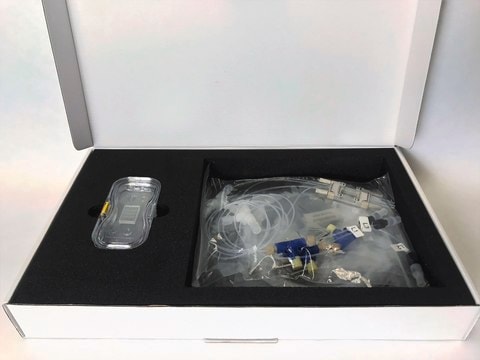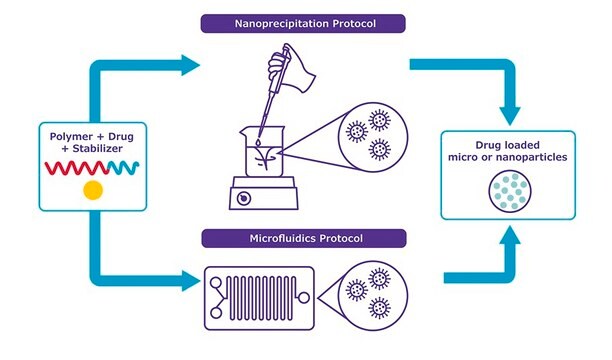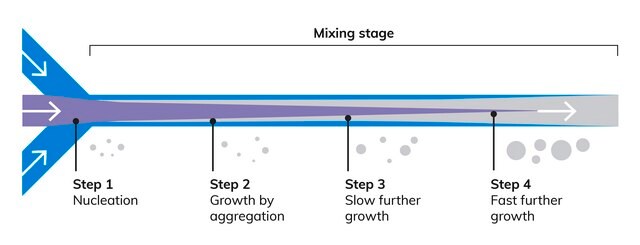920436
NanoFabTx™ PEG-PLA drug formulation screening kit
for synthesis of PEGylated nanoparticles
Sinónimos:
Microfluidics, NanoFabTx™ reagent kit, Nanoformulation, Nanoparticle kit, PEG-PLA
About This Item
Productos recomendados
descripción
Kit components :
PEGPLA-L-M (919942-500mg)
PEGPLA-H-M (919934-500mg)
Stabilizer-Nano (907766-5g)
PEG-PLA drug formulation screening kit, for synthesis of PEGylated PLA nanoparticles
Nivel de calidad
aplicaciones
advanced drug delivery
temp. de almacenamiento
2-8°C
Categorías relacionadas
Descripción general
- A Nanoprecipitation protocol to prepare drug-encapsulated nanoparticles in standard laboratory glassware.
- A Microfluidics protocol using commercial platforms or syringe pumps.
Aplicación
Características y beneficios
- Includes tested protocols with step-by-step instructions for nanoprecipitation or microfluidics-based syntheses
- Requires minimal laboratory setup
- Optimized to achieve monodisperse, homogenously shaped, biodegradable, PEGylated PLA nanoparticles in any size between 60 and 100 nm
- Formulated to maximize the encapsulation of hydrophobic drugs
- Includes two different PEGylated PLAs
Información legal
Producto relacionado
Código de clase de almacenamiento
10 - Combustible liquids
Elija entre una de las versiones más recientes:
Certificados de análisis (COA)
It looks like we've run into a problem, but you can still download Certificates of Analysis from our Documentos section.
Si necesita más asistencia, póngase en contacto con Atención al cliente
¿Ya tiene este producto?
Encuentre la documentación para los productos que ha comprado recientemente en la Biblioteca de documentos.
Global Trade Item Number
| Número de referencia del producto (SKU) | GTIN |
|---|---|
| 920436-1KT | 4065266037487 |
Nuestro equipo de científicos tiene experiencia en todas las áreas de investigación: Ciencias de la vida, Ciencia de los materiales, Síntesis química, Cromatografía, Analítica y muchas otras.
Póngase en contacto con el Servicio técnico





